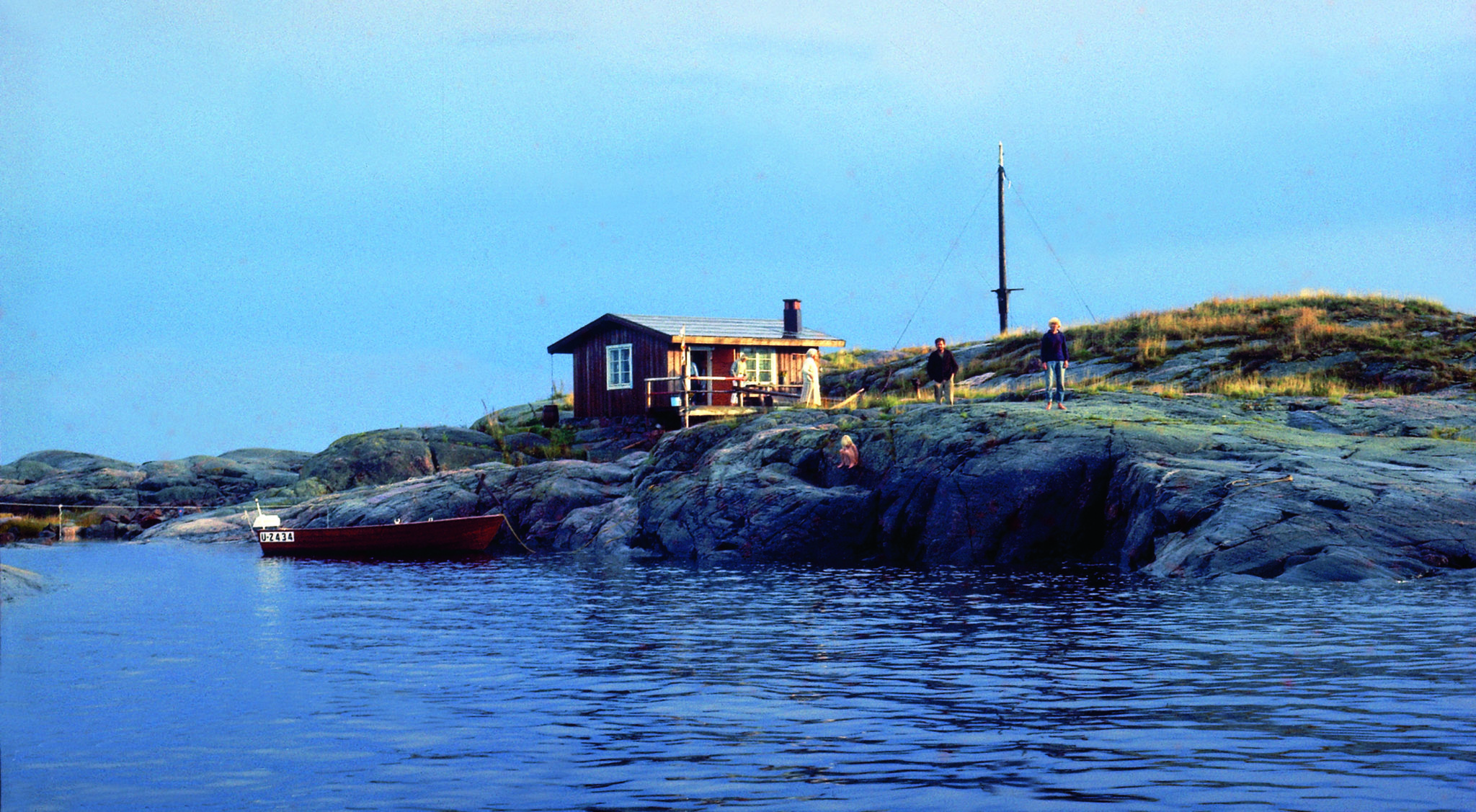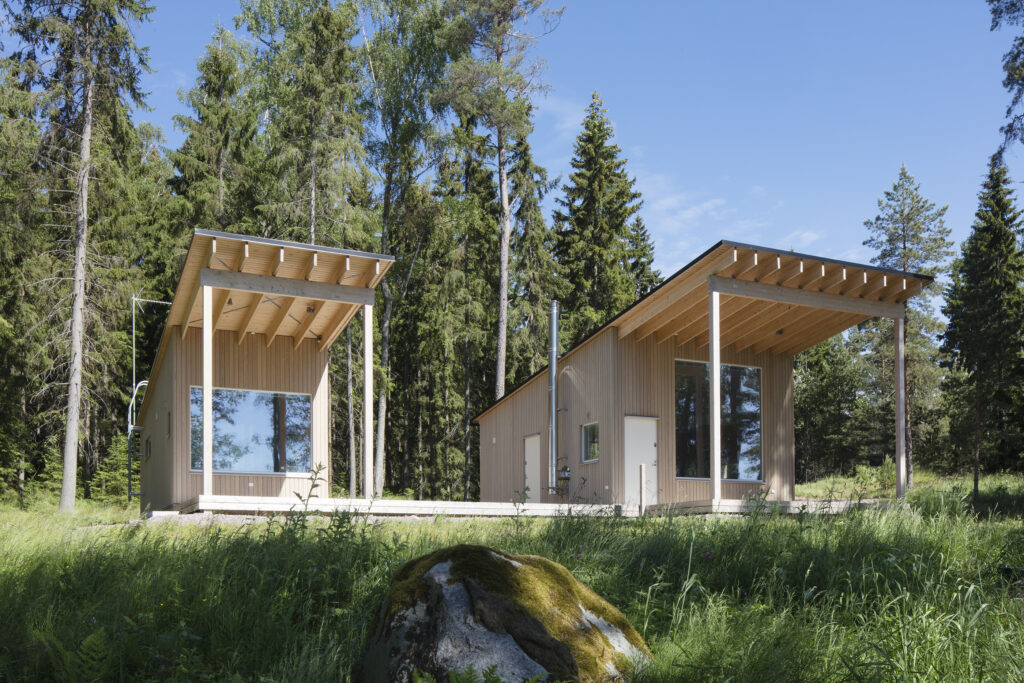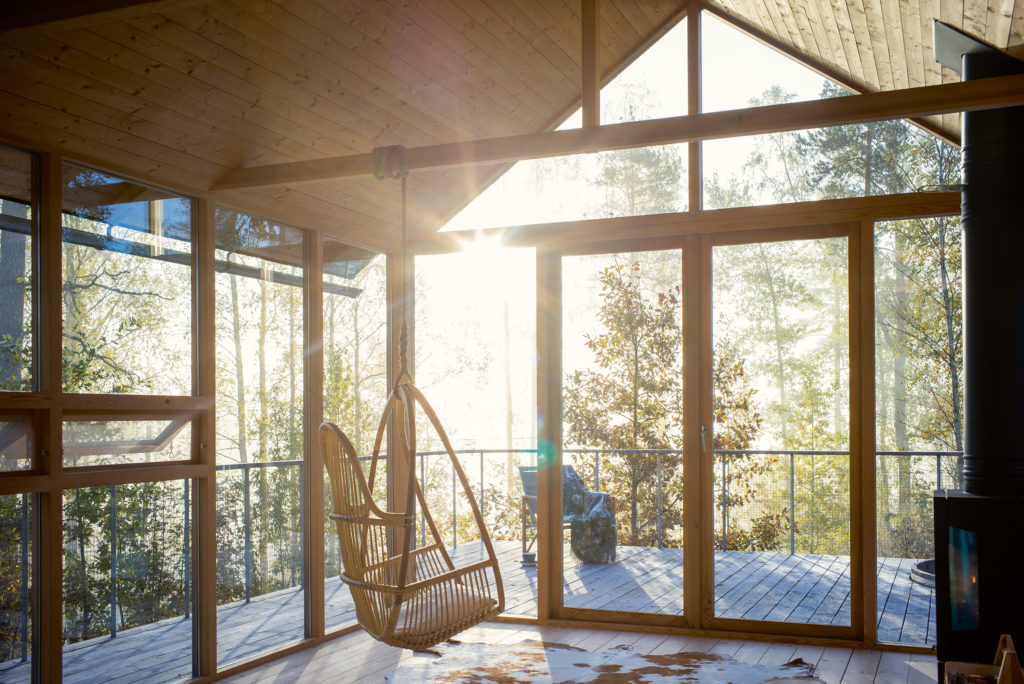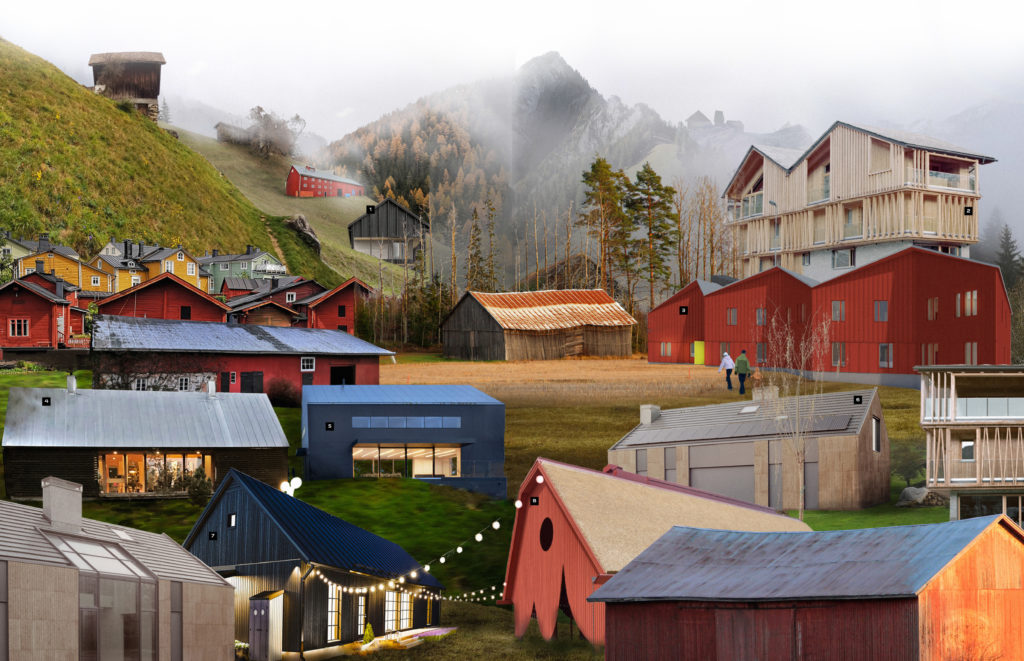A Cabin in the Archipelago

Jonas Malmberg interviewed Raili Pietilä in April 2005 on designing the summer cabin for Tove Jansson and Tuulikki Pietilä. The leisurely interview was carried out at her kitchen table at her home in central Helsinki.
JM According to both the drawings in the archives of the Museum of Finnish Architecture and colleagues, the design for the Klovharu summer cottage was made by you. Did Reima Pietilä participate in the design at all?
RP Tove’s and Tuulikki’s summer place for Klovharu was very different from our major works. Reima participated in it only a little, as at the same time the design of Dipoli was being made in our office.
JM A summer residence on a small treeless island in the middle of the sea is rather an odd notion for Finnish summer cottagers. What kind of thoughts did designing it evoke? What was the inspiration behind it?
RP Building a summer place in the outer archipelago was an interesting task and the location felt even frightening. One day Tove came to our office and explained that she needed a summer cottage. She participated actively in the design, and the model for it was a fisherman’s cottage on the island of Pellinge that she had measured down to the details of the windows. Tove and Tuulikki were also active clients in decisions about the interior, since they wanted to discuss precisely the needs of the small space – indeed, so precisely that there was a discussion about places for specific objects, including handkerchiefs. Both had travel chests for their own belongings, with space for their necessary clothes. The colours of the interior, including the black ceiling, followed Tove’s wishes.
The cottage is located slightly below the highest point of the island. The location was found when Tove stayed in a tent on the island late in the autumn and looked for the most suitable spot for the house. From the highest point of the island water ran through the layers of soil into a small depression next to the cottage, and from there into the cellar. At the same time, the water was filtered and purified for household use. This was needed because Tove and Tuulikki had their doubts about the purity of the water coming from the copper roof of the cottage. The island also had a rather large natural pool, where water collected after storms and after the winter. It was at the same time a place for both washing and swimming. Tove and Tuulikki tried to grow potatoes on the highest point of the island. They carried nutrient-rich seaweed to form a soil substrate, but the climate was too severe and the storms were harsh on the plants, so there was never any potato crop.



JM The style of the cottage is un-modernistic, like a cottage or croft following centuries-long traditions. Was this an obvious choice?
RP The choice of style had its starting points in the surroundings and Tove’s own wishes. Tove didn’t see any other alternatives for the appearance than a fisherman’s cottage. I agreed with her and did not want to push any other kind of architecture on them. A grey wooden building sits best out on the island. The beautiful and smooth shoreline rocks on the south side of the cottage and the more rugged northern part of the island create strong features for the surroundings.
JM Building on a small island differs from ordinary building. What special measures and choices were there, for instance with regards to the construction period and building materials?
RP The construction of the cottage began in late summer 1964 and continued the next spring, so that it was completed in July 1965. First, the small depression was exploded slightly larger, so that it was possible to build an earth cellar for storing food. Also a small sauna was built in the cellar.
Just as with the large projects in our office, even this small cottage had drawings carefully prepared for it, in several details in a 1:1 scale. Based on these, construction proceeded well and without any great mishaps. Fewer terraces were built than had been indicated in the drawings, but that was typical for the works of our office. The plans were drawn up carefully to the smallest detail, but on site the solutions could be flexible if necessary.
A particularly pleasant part of the cottage is the route marked off with a rail leading from the naturally formed boat harbour to the terrace. The terrace on the south side, with its long plank benches and tables, was the most sheltered spot on the island. Tove and Tuulikki did their share of the building work. Tove herself even built in front of the cottage the wood store that looked like a barbecue.



JM Nowadays the Klovharu cottage has become a tourist site for Moomin fans and has raised interest also abroad. Have people contacted you because of the cottage?
RP Well it is rather extraordinary that a small outer archipelago cottage has begun to receive so much attention. Perhaps the most unusual case occurred in 2003, when Jari and Sirkkaliisa Jetsonen’s exhibition ”Sacral Space” was being shown in the main hall of the Tokyo Design Centre. At the same time, in the upstairs exhibition space, was a copy of the entrance to the Klovharu cottage made by architect Sakurako Funabiki. Behind the natural-sized façade, inside the cottage, films by Tuulikki and Tove were being shown.
JM What memories do you have of the cottage? Did you and Reima go on holiday there or visit it?
RP Tove and Tuulikki always spent the whole summer at the cottage. They began collecting for the food store already after Christmas, so that in May several carefully packed and itemised boxes were full of provisions. Tuulikki was very careful and skilled at packing and she made innumerable small lunchboxes that were easy to transport, even in the boat. Over the years Tove and Tuulikki had learnt how much provisions were needed for the summer. The cellar food store was like a real Moomin house, where the sausages hung next to the sauna and the tin cans were in order waiting to be used.
When Reima was teaching in the USA, in St. Louis, we had seen hippies there, but when we returned to Finland in the summer of 1969 and saw Tove and Tuulikki at the cottage with flower garlands on their heads we thought that they were the real hippies – in a positive sense, of course.
In those years our office was often very busy and we even missed out on summer holidays. But Reima and I did visit Klovharu a few times, either with a motorboat the whole way from Helsinki, or by taking the car part of the way. One summer Annukka, our daughter, was looked after on the island by Tove and Tuulikki. It was probably a very tiring experience for them to look after a child under the simple conditions of the island. Even though the cottage on Klovharu was small guests were welcome. Sometimes guests got to sleep in the cottage and Tove and Tuulikki slept in the tent. ↙






